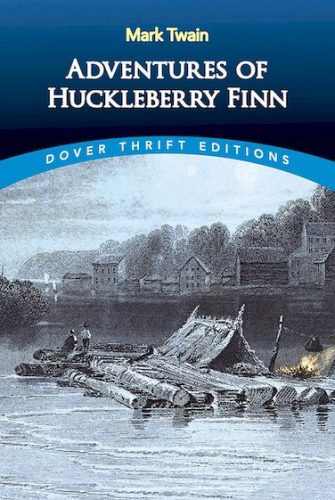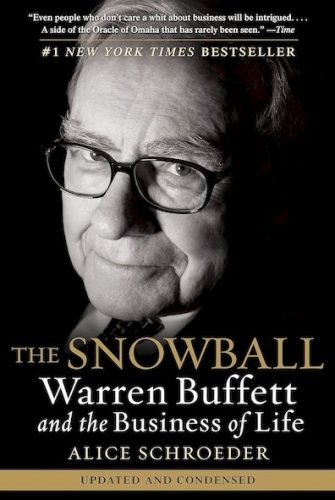Ever wonder how a cup of coffee ended up in your hand?
Forget Starbucks, this story starts millennia ago, with camels traversing dusty deserts laden with exotic spices. “A Splendid Exchange: How Trade Shaped the World” unveils the thrilling history of global trade, a tapestry woven with silk, gold, and even… Boston Tea Party secrets!
Dive deeper and discover:
- Hidden histories: From the ancient spice trade to the invention of coffee (thanks to curious goats!), uncover surprising stories that shaped our world.
- Trade’s dramatic impact: Witness empires rise and fall, wars fought over precious commodities, and lives transformed by exchanging goods and ideas.
- The bittersweet truth: Explore the benefits and challenges of trade, from creating prosperity to fueling conflict and exploitation.
- Modern-day relevance: As globalization continues to shape our world, this book offers valuable insights and prompts you to reflect on its complexities.
Ready to embark on this captivating journey? Buckle up and prepare to be surprised, informed, and entertained by “A Splendid Exchange”. Let’s begin!

Summary: ‘A Splendid Exchange: How Trade Shaped the World’
Main points
- Long-distance trade has existed for millennia: It started with precious items like silk, gold, and spices, and evolved to include agricultural products like corn, coffee, and cotton.
- Trade routes and methods have changed: From camels on land to ships on water, transportation has become faster and more efficient.
- Trade has had both positive and negative impacts: It has brought prosperity to many but also led to conflict and exploitation.
- Globalization is a complex process: It benefits some and hurts others, and its effects are still felt today.
- The book covers much history, from ancient times to the present day.
- He discusses the role of trade in shaping cultures, economies, and political systems.
- The book concludes with a discussion of the challenges and opportunities presented by globalization.
Summary: ‘A Splendid Exchange: How Trade Shaped the World’
In today’s global economy, everyone is accustomed to purchasing goods from other countries – electronics from Taiwan, vegetables from Mexico, clothing from China, cars from Korea, and skirts from India. Most modern shoppers take their products “Made in (some other country)” stickers for granted. Long-distance commerce was not always this common, although foreign trade – the movement of goods from one geographic region to another – has been a vital factor in human affairs since prehistoric times. Thousands of years ago, merchants transported only the most precious items – silk, gold and silver, spices, jewels, porcelains, and medicines – via ancient, extended land and sea trade routes, including the fabled Silk Road through central Asia. Moving goods great distances was too complex and costly to waste the effort on ordinary products. However, people often carted grain and other foods over shorter distances from farms to market towns.
“Man has an intrinsic’ propensity to truck, barter and exchange one thing for another’.” [ – Adam Smith]
Numerous signs provide clues about ancient, long-distance trade, a fundamental human activity for millennia. In Mesopotamia, where copper is not indigenous, archaeologists uncovered copper headgear by Sumerian warriors in 3000 B.C. The Sumerians obtained the metal from traders traveling hundreds of miles away from mines. People began using boats in Northern Europe some 15,000 years ago, and that is probably how the earliest traders moved their wares. The earliest trade by water was between farmers who bartered food items and hunter-gatherers who bartered animal pelts. Obsidian, ideal for making cutting tools and weapons, was one of the first trade items. Greece does not naturally produce obsidian, but archeologists found 12,000-year-old obsidian flakes on its mainland. The stone must have come by sea from Melos, 100 miles away. Shipping goods by water was more accessible and cheaper than land transport. Greek historian Herodotus describes early round boats of animal hides stretched over wooden frames. The “largest…carried about 14 tons,” but only downstream. At the journey’s end, the hides were folded, packed on donkeys, and taken back upstream.
“On some unrecorded occasion deep in prehistory, a man, or several men, initiated early long-distance trade by setting out on the water in boats.”
In olden times, transporting trade goods was a deadly enterprise. Bandits roamed land routes, eager to kill merchants and steal their wares. The sea trade was daunting: ships were flimsy, navigation was rudimentary, pirates abounded, and dangerous weather sank many ships. Yet, goods continued to move, driven by the immense profits to be made by bartering.
Camels, Incense and Pax Islamica
During the late Pleistocene era, ending 10,000 years ago, a land bridge called Beringia (now the area of the Bering Strait) existed temporarily between the eastern and western hemispheres. As a result, plant and animal species moved between the Old and the New Worlds. Humans moved west to the New World, and camels and horses moved east into the Old World.
“One of the earliest commodities traded by boat must have been obsidian, a black volcanic rock (actually a glass) that is a favorite of landscapers and gardeners worldwide.”
Because camels can store water efficiently throughout their bodies, they can go days or weeks without drinking. Plus, camels sweat less – that is, lose less of their stored water – than other animals, making them ideally suited for life in arid regions. These hardy creatures quickly became the primary beasts of burden for transporting goods throughout Asia, including the Arabian deserts. Merchants also used donkeys, but the indefatigable camel did most of the work. One camel driver with three to six dromedaries could move two tons of cargo some 20 to 60 miles daily. Initially, traders transported only the most valuable goods: incense, perfumes and body oils – precious items during an era when people wore the same clothes repeatedly and seldom bathed, a time when public sewerage was either nonexistent or exceedingly rank and rudimentary. Along with silk, frankincense and myrrh were the most treasured goods.
“How did goods get from China to Rome? Very slowly and very perilously, one laborious step at a time.”
Muhammad, the prophet of Islam, was born into a desert tribe of traders. His successor as Muslim ruler, Abu Bakr, was a cloth merchant. With its early roots in trading, Islam has always respected the movement and sale of merchandise. The Quran teaches, “Do not devour your property among yourselves falsely, except that it be trading by your mutual consent.” Early Muslims were not permitted to steal from their co-religionists, but stealing from infidels was a different matter. Thus, many Muslims became fearsome desert raiders.
“The advent of the written word around 3300 B.C. lifted history’s curtain and revealed an already well-established pattern of long-distance trade.”
Islam quickly became dominant throughout much of the known world. Muslims controlled the vital caravan routes, which meant they commanded most.
Extended commerce. Muslim fleets dominated the oceans as Muslim plunderers governed the land. After the passing of Muhammad in 632, Islam emerged as the primary economic and social influence. They endured a period of peace and stability under Islamic rule until the 11th century, when Christians reclaimed territories in Spain and other parts of southern Europe, coinciding with the First Crusade. Nonetheless, Muslim merchants remained the principal force in long-distance business until the 16th century and, in numerous regions, well into the modern era.
“Throughout recorded history, the main manufactured trade commodity was fabric.”
In ancient eras, consistent trade occurred between China and regions to the west, encompassing Arabia and Europe. Islam reached deeply into China before the seventh century. Muslim merchants, particularly Persians, actively engaged in commerce with the Chinese. They traversed the ancient Silk Road, as did European traders. The Chinese organized extensive seafaring expeditions for treasure voyages to India, Java, Sumatra, and later to the East African coast.
Maritime Routes and “Choke Points”
Maritime trade was so vital in the ancient world that early Greek powers fiercely battled each other to control the sea routes and the Hellespont and Bosporus, two “naval choke points.” Due to their soils’ restricted fertility, Greek city-states had to trade olive oil and wine for imported wheat and barley to survive. Athens aspired to become the leading Greek city-state to control essential grain shipments. Athens and Sparta fought for dominance over the narrow waterways and, consequently, all traffic between the Black Sea and the Aegean. The Athenians ultimately emerged as a significant maritime force, establishing the formidable Athenian Empire. However, Sparta rose again to conquer Athens and impose humiliating peace terms. Years later, Athens regained strength once more. When Alexander the Great assumed power, he granted Greek ships the freedom to transport goods over the navigable waters under his control.
“Although the primary purpose of the crusades was not commercial (unless one was Venetian or Genoese), Christians recognized the Muslim control of the spice trade for the lucrative opportunity it was.”
Between the 14th and 17th centuries, spices such as cinnamon, cloves, nutmeg, pepper, and others replaced incense and perfumes as the most precious long-distance trade commodities. Spices were transported via the Silk Road, the Persian Gulf, and the Red Sea. By the 16th century, the Portuguese dominated sea trade with Asia, followed by the Genoese, Venetians, and, subsequently, the Dutch. Distant trade brought numerous benefits to most involved, from affluent individuals who donned splendid Chinese silks and perfumed the air around them with sweet-smelling incense to nations such as the Greeks, who relied entirely on imported grains for sustenance. However, ancient trade routes also transmitted fatal diseases, including the devastating Black Death, a plague inadvertently carried from the Asian steppes to Europe and the East, where it may have claimed the lives of as many as a hundred million people in the 1300s.
Exploration of the New World
In the late 1400s, Genoese navigator Christopher Columbus sought funding from the Spanish monarchy for his westward voyage to reach the legendary markets in China and India. Most educated individuals, including Columbus, believed the world was round by this time. Nonetheless, King Ferdinand and Queen Isabella initially rejected his proposed expedition, considering it excessively arduous and treacherous. Eventually, they commissioned his venture. The rest, as they say, is history. In 1492, Columbus and his three ships reached the New World. During the same period, Portuguese explorer Vasco da Gama completed a voyage of 28,000 miles around the world with a small fleet, spending 95 days away from land. These were unimaginable achievements at the time, and subsequently, global trade and commerce would never be the same.
“By the early 17th century, all paths led to the Netherlands [which] assembled the first genuinely global trading system.”
As mariners and merchant adventurers embarked on remarkable and thrilling voyages of discovery, paving the way for the exploitation of the New World for their gain and to enrich the coffers of their wealthy sponsors, global commerce rapidly assumed entirely new dimensions. The exchange of plant species between the Old and New Worlds, notably corn and coffee, dramatically transformed global agriculture.
“The great national trade organizations, particularly the English and Dutch East India companies, spearheaded Europe’s commercial dominance and made world trade the nearly exclusive province of large corporate entities.”
The oceans also continued to serve as conduits for disease. Conquistador Hernán Cortés introduced smallpox to the New World in the 1500s. His Spanish sailors were immune to it, but it swiftly decimated millions of Aztecs. Other infectious diseases also traversed the trade routes, often with dreadful results, but the most common outcome of maritime trade and exploration was profit. For this reason, the trafficking of enslaved people burgeoned. From the early 1500s to the abolition of slavery in the U.S. in the 1860s, 9.5 million enslaved Africans were transported to the New World. The slave trade forever altered society and reshaped global trade.
“Although free trade benefits humanity, it also creates losers who cannot be expected to accept the new order passively.”
By the early 1600s, Dutch and Spanish naval experts had comprehensively mapped Earth’s wind currents, making sea voyages more accessible and more foreseeable. Enormous silver reserves in Mexico and Peru spurred the development of a global monetary system. The Spanish eight-real coin became the primary currency. Large corporations emerged and expeditiously assumed control over international commerce. With new, more affordable production and labor, numerous service workers, farmers, and textile manufacturers found their work no longer economically viable.
A Shrinking World
As the world became more accessible and “smaller,” global commerce underwent radical transformations. Following 1700, farmers in numerous locations could cultivate valuable New World crops such as cotton, sugar, coffee, and tea, once a Chinese specialty. By the 1700s, cotton grew in popularity over Chinese silk. These developments altered global trade dynamics. The 1800s witnessed significant advancements in transportation and communication, including railways, steamships, refrigeration techniques, and steel manufacturing improvements. Producers were presented with many new methods for transporting goods over longer distances at swifter speeds and a more convenient cost. Furthermore, buyers and sellers could communicate almost instantly thanks to the telegraph. These advancements considerably propelled world commerce.
Free Trade
From the 1400s onward, England implemented various laws imposing tariffs on corn. These “Corn Laws” gradually faded into obscurity, and few paid attention to them until 1756, when the start of the Seven Years’ War led to dwindling grain supplies. Subsequently, the nation’s agricultural trade policy swiftly became contentious, instigating riots to protest grain shortages. This national concern soon extended to other products, particularly cotton fabric, but debates regarding how to levy fees on imports and enhance exports persist on an international scale even today.
“When goods are not allowed to cross borders, soldiers will.” [ – Frédéric Bastiat]
The U.S., a vast land with extensive domestic markets, embraced protectionist measures by imposing high import taxes. Traditionally, Republicans advocate protectionism, while Democrats are generally less enthusiastic about it. The 1930 Smoot-Hawley Tariff, “one of the most notorious pieces of legislation ever passed by Congress,” elevated already steep U.S. import tariffs, provoking other nations to raise their tariffs significantly. Consequently, international commerce nearly ground to a halt in the early 1930s. Cordell Hull, secretary of state under President Franklin Roosevelt, utilized his formidable powers of persuasion to champion free trade. Thanks to him, Congress passed the Reciprocal Trade Agreements Act in 1934, opening up the U.S. market. International trade thrived at an astounding average annual rate of 6.4% for the subsequent 50 years.
“Globalization, it turns out, was not one event or even a sequence of events; it is a process that has been slowly evolving for a very long time.”
Free trade greatly benefits numerous individuals worldwide. A 2006 study demonstrated that the average GDP amounted to $17,521 in nations with open trade policies, while countries with consistently closed trade policies only achieved an average GDP of $2,362. Free trade operates like any zero-sum game: some emerge victorious, while others lose. Your fate hinges on whether your product can be manufactured more affordably elsewhere. If so, people worldwide will purchase it and enhance their lives, but you may soon find yourself unemployed. Attempting to reverse this effect resembles holding back the tide with a broom. Ultimately, this is globalization: a blend of triumphs and setbacks, where the tally is maintained in terms of distance and currency.
About the Author
William J. Bernstein is an author, financial theorist, and historian. His other books include The Birth of Plenty and The Four Pillars of Investing.



